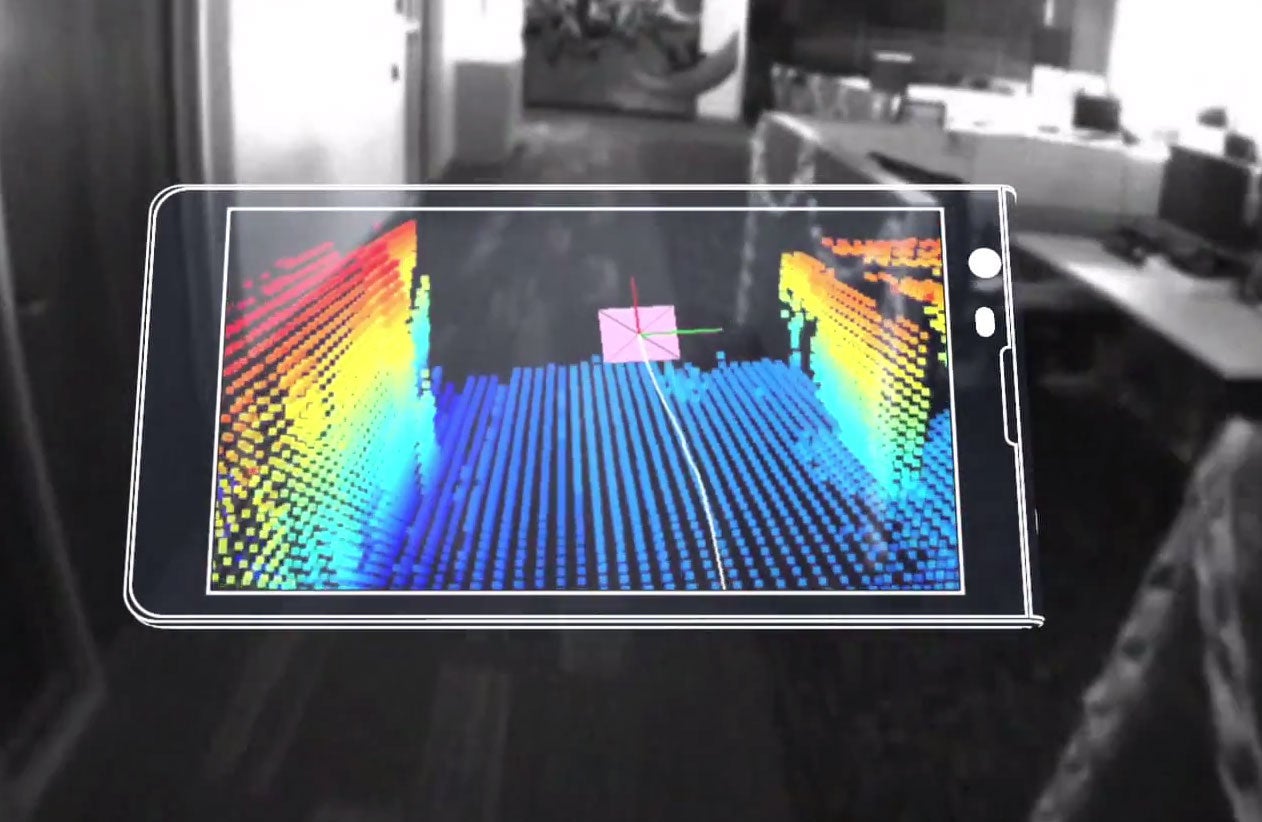Google puts a Kinect motion sensor in your smartphone to understand the physical world
New prototype hardware takes a quarter of a million 3D measurements a second, will be given to developers to play with

Google has unveiled an ambitious new prototype smartphone capable of producing detailed 3D maps of its environment in real time.
The device has been created under an initiative named Project Tango from Google’s Advanced Technology and Projects group. The handset contains a motion tracking camera and depth sensors that record a quarter of a million 3D measurements every second.
“We are physical beings that live in a 3D world yet mobile devices today assume that the physical world ends at the boundaries of the screen,” says Johnny Lee, the leader of Project Tango. “Our goal is to give mobile devices a human-scale understanding of space and motion.”
Google has developed the device with a large group of industrial and academic partners and will be distributing 200 devices to developers to see what they can do with the technology. Although the core of the technology is the ability to accurately and quickly map indoor environments, Google have not been prescriptive in how this might be used.
In a demo video for the project a number of different applications are reference, from allowing users to scan their living room and turn it into a game world to using the device to helping the visually impaired navigate unfamiliar environments.
If the capabilities of Project Tango look similar to those of the Kinect, the motion sensor device that launched with the Xbox 360, it should come as no surprise. Johnny Lee, the project’s lead, helped Microsoft develop the Kinect, after wowing the internet with his innovative Wii remote hacks back in 2007.
Project Tango is just one of Google’s more ambitious projects currently being developed the Advanced Technology and Project group – a team of engineers and coders that was acquired when Google bought Motorola, but that the tech giant decided to hold on to when it sold the handset division to Lenovo.
As well as Project Tango the group is also responsible for Project Ara – the concept ‘modular’ smartphone that is designed to cut down on e-waste by letting users simply swap out old components on their mobile when they want an upgrade.
Subscribe to Independent Premium to bookmark this article
Want to bookmark your favourite articles and stories to read or reference later? Start your Independent Premium subscription today.

Join our commenting forum
Join thought-provoking conversations, follow other Independent readers and see their replies